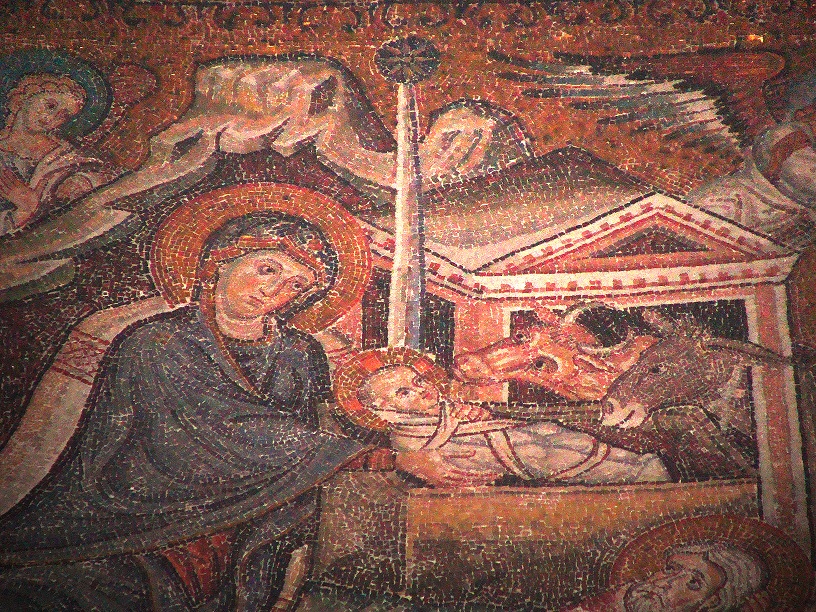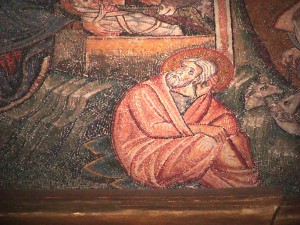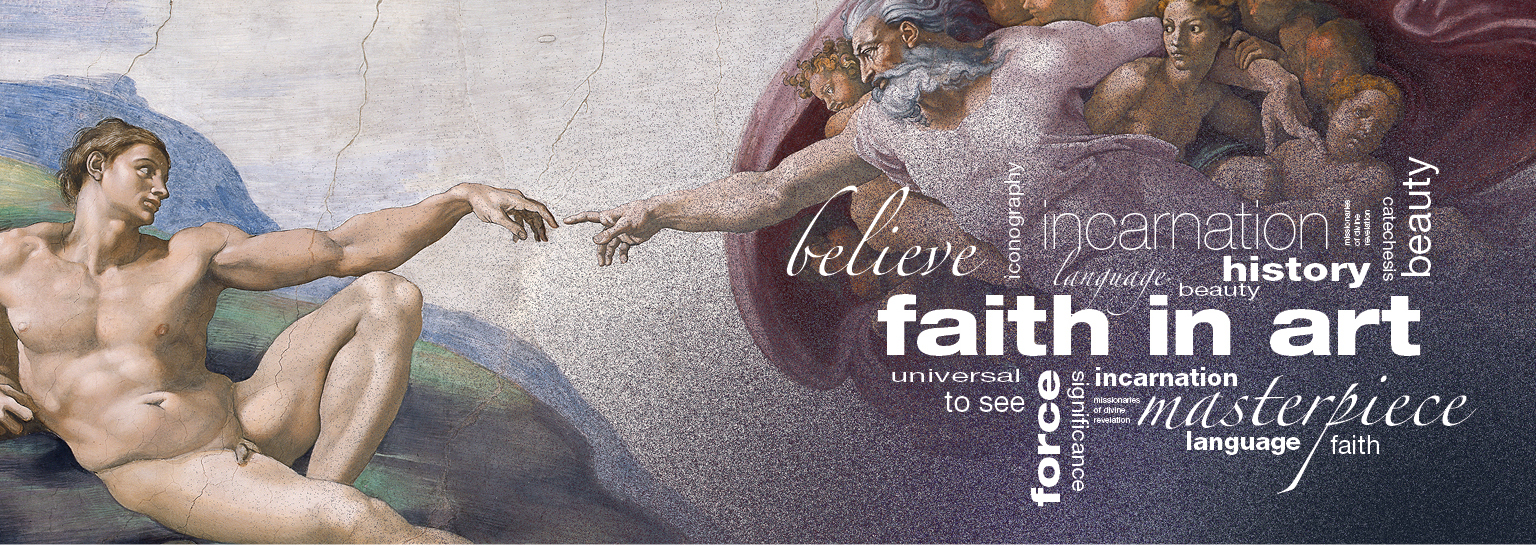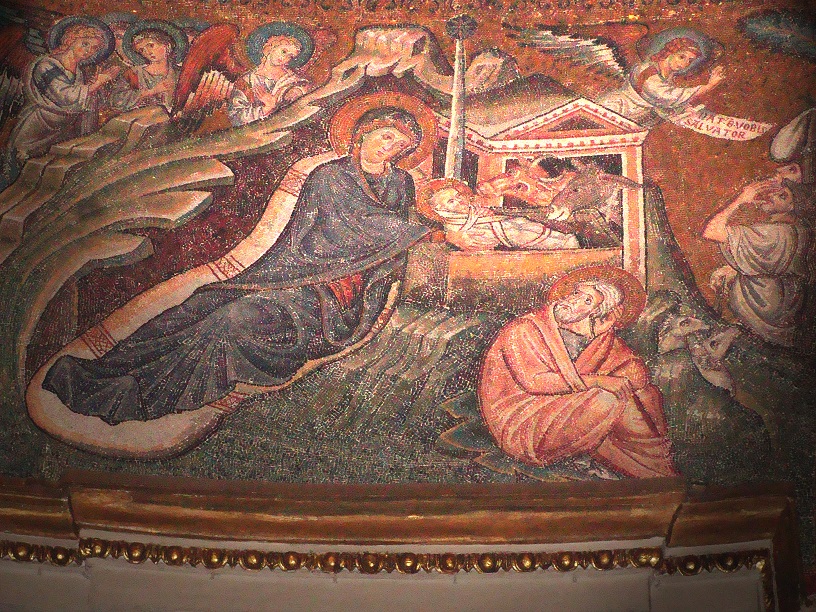The first “living” crib was created on Christmas Eve 1223 in Greccio, Italy. Here, St Francis of Assisi, wanted to relive the happy Bethlehem night in which the Almighty God was born, wrapped “in swaddling clothes and placed … in a manger” by His mother. (Lk 2:7) To create this profound experience, he made a “living” crib using real animals and a stall.
In 1291, the first Franciscan Pope, Nicolas IV, shared St Francis’ intuition when he commissioned the Tuscan sculptor, Arnolfo di Cambio, to realise a crib sculpted from the stones of St Mary Major’s Basilica in Rome. Also, that same year, the Pope commissioned Joseph Toritti, a Franciscan mosaic artist, to decorate the apse of St Mary Majors Basilica with the important episodes of Mary’s life and Christ’s infancy.
The mosaic of The Nativity is situated on the left-hand side of the apse at the level of the windows. A quick comparison with Arnolf di Cambio’s work reveals that the sculpted crib was the inspiration for this nativity scene.

The heart of the composition shows Mary with the baby wrapped in swaddling clothes who appear to emerge from a dark cave carved into the mountain side. The mountain has a pyramidal structure that is enforced by its golden colour. This represents the divine world that is made present in human history. The obscurity of the cavern represents the obscurity of the world without God. The scene is illuminated by the white bed upon which the Virgin rests. Our Lady is regally dressed because she is the Mother of the King of Kings. In her dark blue mantle, you can make out three golden stars that allude to her perpetual virginity – before, during and after child birth.
Looking closer into the scene the blessed Mother places the baby, wrapped in swaddling clothes resembling a shroud, in a manger that is in the form of a tomb. The Lord’s halo is cruciform shape to remind us that He is the Son of God. Together, the manger, shroud like clothes and cross are three symbols that prefigure Christ’s sacrifice on Calvary. The manger, in the shape of a Temple, with the star above signify Jesus’ divine nature. Whilst being true man He did not cease to be true God. Next to the child are the ox and the ass. The prophet Isaiah cited these two animals saying; “The ox knows its owner and the donkey its master’s crib; Israel does not know, my people do not understand…” (Is 1:3). It is a prophecy of the incredulity of the people of Israel towards their Messiah.
 St Joseph is sitting at the front of the grotto with his head turned towards the Child and His mother. He is contemplating the mystery and offering his humble service to the Son of God and His mother. On the left-hand side, behind the mountain the angels are singing their praises bringing the message to the shepherds saying: Natus est vobis Salvaor “Today in the town of David a Saviour has been born to you.” (Lk 2; 11)
St Joseph is sitting at the front of the grotto with his head turned towards the Child and His mother. He is contemplating the mystery and offering his humble service to the Son of God and His mother. On the left-hand side, behind the mountain the angels are singing their praises bringing the message to the shepherds saying: Natus est vobis Salvaor “Today in the town of David a Saviour has been born to you.” (Lk 2; 11)
Yes, today the Saviour is born for us. May our hearts be open and ready to pray like Mary. May we be willing like Joseph with the desire of the shepherds, the praise of the angels and the simplicity of the ox and the ass to welcome the Almighty God who became small so that no-one would have fear of him.

